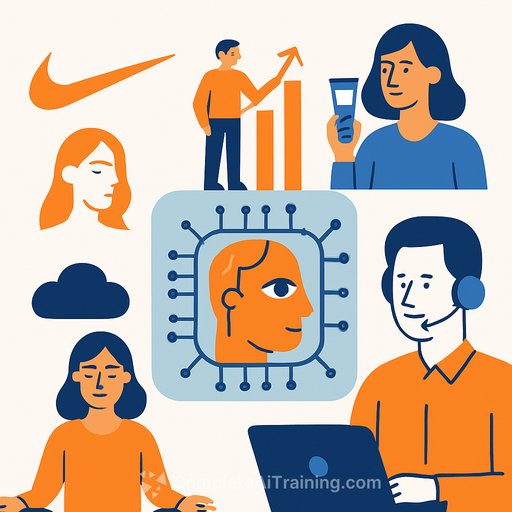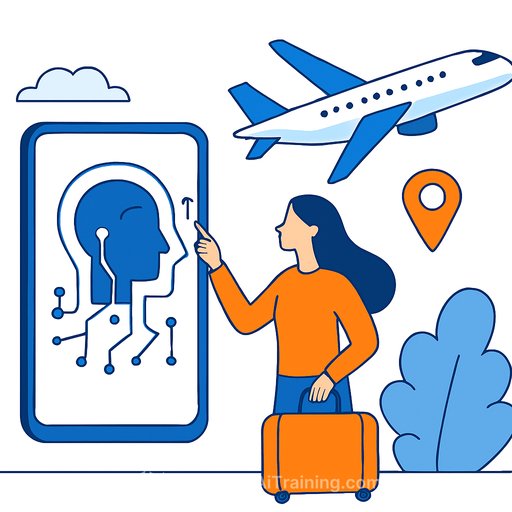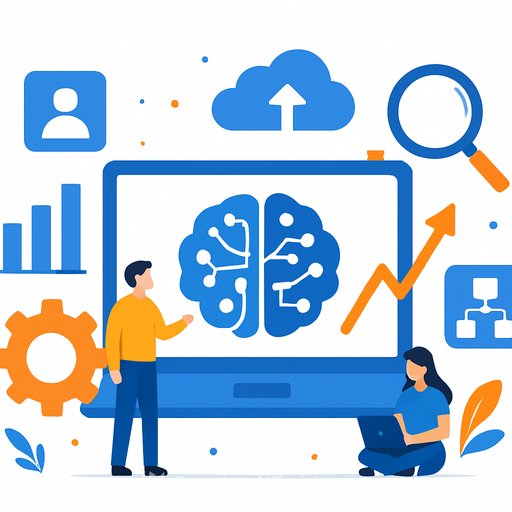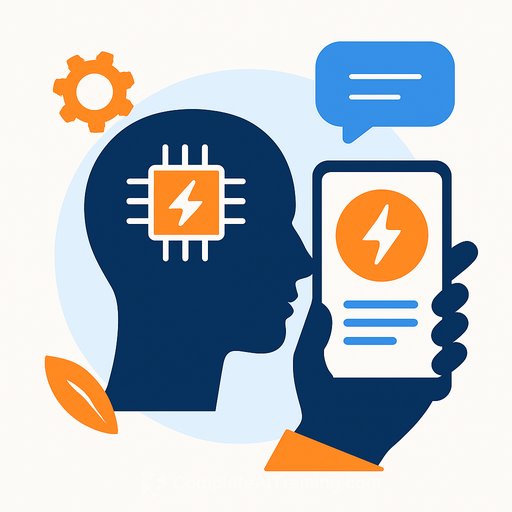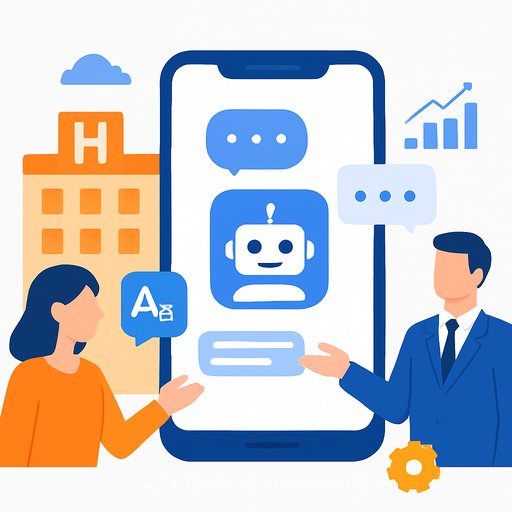Multimodal AI: Key Points for Customer Support and Product Development
Multimodal AI-powered marketing assistants can cut content tagging and enrichment time by up to 70%, speeding up campaign delivery significantly. Nike’s “Never Done Evolving” campaign used multimodal AI to achieve a 1082% increase in organic YouTube views, making it their most-watched content ever. Calm improved daily mindfulness practices by 3.4% through personalized content recommendations powered by multimodal AI.
Key Benefits of Multimodal AI for Business Strategy
Early adopters of AI marketing assistants report task time reductions of up to 70%, freeing teams to focus more on strategy and creativity.
Time Saved on Tagging & Content Enrichment
- 70% faster workflows mean more bandwidth for strategic work and innovation.
Multimodal AI tools boost efficiency across business operations:
- Dramatic efficiency gains: Faster project turnaround for marketing and content teams.
- Enhanced decision support: Combining text, visuals, and other data improves forecasting and problem-solving.
- Broader automation: End-to-end automation of tasks like report generation and campaign orchestration through natural language prompts.
- New product innovation: Embedding multimodal AI in products such as AR shopping apps creates new revenue streams.
- Competitive advantage: Over 70% of top executives say advanced generative AI is key to staying ahead, according to IBM.
Real-World Business Applications of Multimodal AI
By interpreting and integrating multiple data types, multimodal AI is transforming customer service, marketing, healthcare, manufacturing, and more. Here’s how it’s applied in practice:
L’Oréal: Media and Content
L’Oréal uses Google’s Imagen 3 and Veo 2 models in its internal GenAI Beauty Content Lab, CREAITECH, to speed creativity, streamline content production, and maintain ethical AI use.
- Cut concepting time from weeks to days.
- Improved speed-to-market for campaigns and product launches.
- Reduced production costs.
- Established a Responsible AI Framework focused on ethics.
- Set new standards for transparency and sustainability in AI.
Calm: Personalized Brand Experiences
Calm integrated Amazon Personalize to deliver tailored content recommendations amid a rapidly growing content library.
- Personalized in-app content without needing deep ML expertise.
- Helped users find content matching their preferences.
- Boosted daily mindfulness practices by 3.4%.
- Scaled AI-driven personalization efficiently.
Intercom: Multimodal Chatbots for Customer Support
Intercom enhanced its AI agent, Fin, with multimodal capabilities supporting voice, text, and images, improving customer support quality.
- Reduced resolution times.
- Increased customer satisfaction with flexible interactions.
- Maintained consistent, brand-aligned responses.
- Provided personalized, AI-driven assistance.
Nike: AI Storytelling in Marketing
Nike’s “Never Done Evolving” campaign used AI to generate a realistic tennis match between Serena Williams at ages 17 and 35, modeling playing styles from different eras.
- Reached 1.7 million viewers for the grand final on YouTube.
- Achieved a 1082% increase in organic views over typical Nike content.
- Set a new record for Nike’s highest organic views on YouTube.
- Won industry awards for creative use of generative AI.
Core Multimodal AI Models and Technologies
| Model | Business Benefits |
|---|---|
| OpenAI’s GPT-4 | High-quality text generation and image interpretation for reporting, analysis, and documentation. |
| GPT-4o (Omni) | Real-time multi-input interaction (text, image, audio, video), ideal for support, accessibility, and automation. |
| OpenAI’s CLIP | Smarter image search, content moderation, and product tagging via natural language. |
| Google’s Gemini (v1 & v2) | Dynamic visual analysis and language tasks for surveillance, media, and real-time decisions. |
| Meta’s Multimodal Projects | Creative tools and visual assistants enhancing design, ecommerce, and interactive media experiences. |
Traditional vs. Multimodal AI: Business Outcomes Comparison
| Function | Traditional AI | Multimodal AI |
|---|---|---|
| Content generation | Text or image-only generation | Integrated text, image, and voice generation |
| Customer experience | Static personalization | Dynamic user experience based on real-time behavior and visual data |
| Support automation | Text-based chatbots | Emotion-aware bots using voice and facial recognition |
| Product innovation | Based on limited user inputs | Data fusion from video, speech, and usage patterns |
| Decision speed | Delayed insight via single data stream | Real-time analytics from multiple inputs |
Decision Matrix: Is Your Business Multimodal-Ready?
Evaluate your readiness for multimodal AI by reviewing these key indicators:
- Data Variety: Do you collect text, images, video, and audio data?
- Tech Maturity: Can your systems integrate APIs and use modern cloud architecture?
- Team Capacity: Are your marketing or analytics teams open to AI-assisted workflows?
- Strategic Priority: Are personalization, automation, or experience design top goals?
Adoption Challenges and How to Address Them
Data Privacy and Regulatory Risk
Multimodal AI often processes sensitive data like facial recognition and voice, subject to regulations such as GDPR, HIPAA, and CCPA. Mishandling can lead to fines and reputational harm.
Mitigation: Encrypt data at rest and in transit, implement clear consent mechanisms, and use AI platforms with audit logging and compliance support.
System Integration Complexity
Integrating multimodal AI with existing CRMs, digital asset management, and support systems can be technically challenging, especially in legacy environments.
Mitigation: Use AI models with flexible APIs, start with modular deployments focused on specific tasks, and consider pre-trained plug-and-play platforms for faster setup.
Skill Gaps
Teams need foundational knowledge of prompt engineering, model behavior, and ethics to maximize AI’s potential.
Mitigation: Provide hands-on workshops and develop internal AI guides focused on marketing, customer experience, and content workflows.
Multimodal AI Models FAQs
- Who benefits most? Marketing, support, product, and analytics teams, especially in customer-facing and content-rich environments.
- What sets multimodal AI apart? It processes multiple input types—text, images, audio, video—making it more context-aware than single-mode AI.
- How to start? Begin with focused use cases like automating image tagging, improving natural language search, or enhancing customer support. Use existing tools from OpenAI, Google, and Meta to prototype and scale.
For practical AI training to build your team's skills in areas like prompt engineering and automation, explore Complete AI Training.
Your membership also unlocks:

